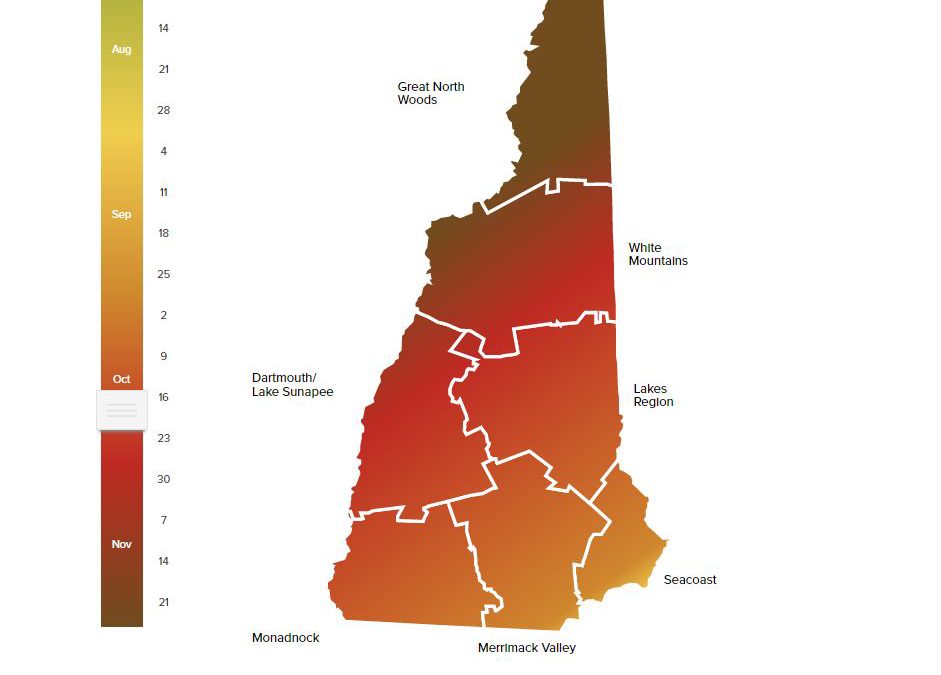Several years ago, tired by the annual newspaper ritual of writing stories about the color of New Hampshire’s autumn leaves, I decided to write about their number instead. I decided to answer the question: How many “peepable” leaves – the ones that turn color and draw tourists – exist in the Granite State?
Turns out, nobody counts leaves, so I had to estimate. Easier said than done.
I started out noting that the landfill in Nashua, where I was working at the time, collects 6,900 tons of “soft waste” each year. That amount includes grass clippings, but I guessed that the total was one-third leaves and that each leaf weighs one-tenth of an ounce. This produced the estimate that 736 million fallen leaves get taken to the landfill in Nashua each year.
This was interesting, but it included leaves that didn’t change color (oaks, pine needles, etc.) and I didn’t know how to extrapolate the results from a single city and apply it to a well-forested state. So I tried a different tack.
I found that the U.S. Forest Service’s New Hampshire’s Forest Resources estimated that New Hampshire had 4 billion live trees in 2006 which were 1 inch in diameter or bigger, and that one-sixth of the forest land in the state is taken up by the species that draw tourists – sugar maple, yellow birch and beech. That makes roughly 670 million “peep-able” trees.
Unfortunately, the Forest Service cares about logging, not leaf peeping, so it only estimates “dry biomass,” which includes trunks and branches, not “foliar biomass,” which is just leaves. That wasn’t any help, either.
Finally, after a lot of poking around, I got some advice from Jennifer Jenkins, then at the University of Vermont, whose top research topic is “measuring and monitoring forest carbon” via measurement of foliar biomass growth, and some number-crunching assistance from people at the Forest Service in Durham who asked not to be identified, probably because they should have been doing something useful instead of answering my ridiculous questions.
These combined to the conclusions that there are 0.73 tons – 1,460 pounds – of leaves in each acre of sugar maple, birch or beech trees.
Multiply that figure by Forest Service’s estimate of 2.6 million acres of maple/beech/birch in New Hampshire and you get 1.9 million tons of peep-able leaves. At a tenth of an ounce per leaf, a little calculator-punching found an estimate of 607 trillion leaves.
That the equivalent of 800,000 leaves per tree, which seems a little high but within the margin of error for the usual estimate for deciduous trees.
So there you have it: New Hampshire isn’t just beautiful this time of year, it’s beautiful 607 trillion times over.
Mathematics always makes things better.


 Return to the Concord Monitor
Return to the Concord Monitor